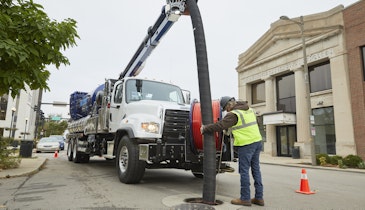Interested in Safety?
Get Safety articles, news and videos right in your inbox! Sign up now.
Safety + Get AlertsRunning a company can be a bit like walking a tightrope. It’s all about balance.
When times are slow and budgets are tight, many programs and activities that don’t directly benefit production or the bottom line are halted, or at best, reduced. Other times, particularly when times are busy, the No. 1 priority is getting as many projects completed as possible with available resources.
What to cut? What to keep? No doubt, this is a tough assignment for any manager, because there are numerous pros and cons for each decision. In too many cases, safety ends up on the “cut” list. It can mean reducing or deferring safety equipment expenditures, personnel and training.
The reason is because of the basic nature of safety: If everything goes as planned, it’s business as usual. No accidents. No injuries. That makes it difficult to know whether money spent on safety is really having an effect. Complacency can set in. Safety money gets cut, or at least deferred.
The main argument for safety is obvious — to protect workers from injury and death. But there is a financial argument to make as well. Keeping safety programs, equipment and training in your budget can, in the long run, be the less expensive route. Studies show that a good safety and health program can save $3 to $6 for every dollar invested.
What do injuries really cost?
The direct costs of an injury are familiar: Medical treatment, lost-time wages and property damage. But here’s what is really significant. According to a study at Stanford University, indirect costs can be four to five times higher than the direct costs. Indirect costs include:
- Investigative costs
- Loss of skilled, experienced workers
- Loss of profit from workers
- Loss of production and work stoppages
- Cost of hiring new workers
- Cost of training new workers
- Re-training expense for an injured worker
- Legal expenses and settlements
- Increased cost of workers’ compensation insurance
- Increased general liability insurance premiums
- Federal, state and local fines for noncompliance
- Inability to contract for work, as result of accident history
The Stanford study actually found that the less serious the injury, the higher the ratio of indirect to direct costs.
| Direct Cost Related to Injury | Indirect Cost to Direct Cost Ratio |
| Up to $2,999 | 4.5 to 1 |
| $3,000 to $4,999 | 1.6 to 1 |
| $5,000 to $9,999 | 1.2 to 1 |
| $10,000 and above | 1.1 to 1 |
OSHA injury cost calculator
OSHA has developed a calculator to help you estimate the direct and indirect costs of workplace injuries. And in the case of “for profit” companies, the calculator also shows how much additional revenue is needed to offset those costs, based on the profit margin of the company.
To use the calculator, visit www.osha.gov/dcsp/smallbusiness/safetypays/estimator.html.
The results are very interesting. Here’s an example. Let’s assume a worker has sustained a simple bone fracture, and that the company has a profit margin of 5 percent. Using the calculator, we can determine that the direct costs of the injury are $50,778, and the indirect costs are $55,855. That’s a total cost of $106,633. Based on the 5 percent profit margin, the employer must generate $2.1 million in additional revenue to offset the cost.
Before an injury happens, it can be difficult to see that a crisis might be avoided or an injury prevented simply because of safety training and preparation. But the calculator produces some hard numbers that show the significant impact that overlooking safety can have.
It’s like insurance
Think of it like you do insurance. Would you risk owning a home without homeowners’ insurance? If something happened, and you lost an uninsured home, the financial impact would be devastating. Home insurance is a protective investment — it protects you financially in the event of a loss of one of your largest assets.
An investment in safety works the same way. You are protecting one of your most important assets — your workers. As you can see from the example above, a serious injury or death of a worker can have a devastating financial impact. Keep this in mind the next time safety cuts or deferments are being discussed.
About the author
David Dow is co-founder of TrenchSafety and Supply — now part of Underground Safety Equipment LLC — which supplies excavation safety products and services to construction, excavation and utility companies. From its facilities in Kansas City, Missouri; Lafayette, Colorado; Memphis and Nashville, Tennessee; North Little Rock, Arkansas; Salt Lake City, Utah; and San Antonio, Texas; Underground Safety Equipment provides sales, rental equipment, repair service and safety training. Dow is also chair of the Training Committee for the North American Excavation Shoring Association (NAXSA).
Visit www.TrenchSafety.com or www.UndergroundSafety.com.





